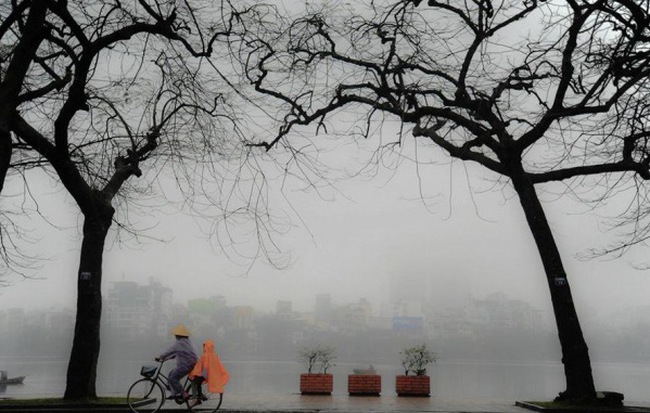Today, Volotour will explore the winter season in Vietnam.
Winter Colors: Ideal Destinations and Unforgettable Experiences
Winter in Vietnam, especially in the northern region, has its own distinctive features with cold, dry weather and noticeable changes in the natural scenery. Winter typically starts from November and lasts until March, with unique characteristics in both climate and local activities.
1. Climate and Temperature
Winter in northern Vietnam generally has temperatures ranging from 15°C to 20°C. During cold spells, the temperature can drop below 10°C. In higher mountain regions such as Sapa, Fansipan, and Mau Son, temperatures can fall below 0°C, and snow and fog may appear. In central Vietnam, winter is drier with temperatures ranging from 20°C to 25°C, while southern Vietnam does not experience a true winter, only a dry season with temperatures between 25°C and 30°C.
2. Winter Scenery
Hanoi: In winter, Hanoi takes on a special charm with the chilly air and thick morning fog. The streets become more tranquil, with golden leaves falling on the pavement, creating a dreamy and romantic atmosphere. Coffee shops on the sidewalks become crowded as people enjoy hot tea or coffee in the foggy winter air.
Sapa: Known for its remarkable winter beauty, Sapa features snowy landscapes, chilly air, and misty valleys. Visitors here not only get to admire the stunning scenery but can also enjoy activities like hiking, trekking, or even snow hunting.
Da Lat: Though it has a mild climate year-round, Da Lat becomes even more enchanting in winter with misty days and a cool breeze. The flower gardens, Xuan Huong Lake, and the hills of Da Lat look even more mysterious in the winter fog.
3. Winter Foods
Pho: A must-have dish during winter for people in northern Vietnam, especially pho bo (beef pho) or pho ga (chicken pho). A steaming bowl of pho with aromatic broth is perfect to warm up during the cold days.
Chao Suon, Banh Cuon: These are common winter breakfast dishes, providing warmth and nourishment for people during the chilly mornings.
Banh Chung, Banh Tet: During the Lunar New Year (Tet), Banh Chung (in the north) and Banh Tet (in the south) are traditional dishes made in winter. These cakes symbolize family reunion and unity.
4. Winter Festivals and Activities
Tet Nguyen Dan: Tet is the most important festival in Vietnam, taking place during winter. It is not only a time for family reunions but also for enjoying traditional foods, visiting relatives, and engaging in Tet-related activities like giving and receiving lucky money (li xi).
Chua Huong Festival, Yen Tu Festival: These festivals, held in early spring, start in winter and attract many pilgrims and tourists to participate.
5. Winter Customs and Culture
Rice Harvesting: Winter in the northern region is also the time for rice harvesting. The sight of golden rice fields provides a stunning view and brings joy to the local farmers.
Winter in Poetry: Winter is a source of inspiration in Vietnamese culture, especially in poetry. Poets like Xuan Dieu, Han Mac Tu, and Vu Hoang Chung have written famous poems about winter, depicting its quietness and romantic beauty.
Winter in Vietnam, with its characteristic cold spells, brings a unique beauty that makes people feel closer to each other, especially through community activities, warm dishes, and the festive atmosphere during Tet.

